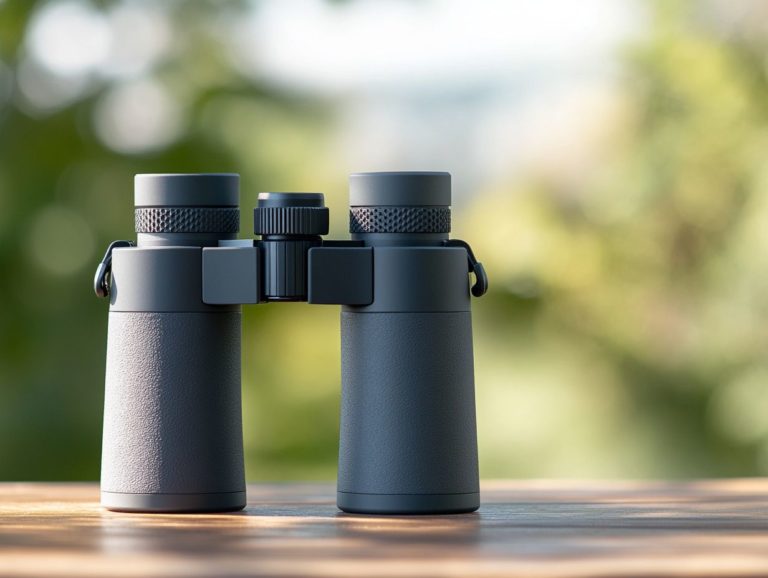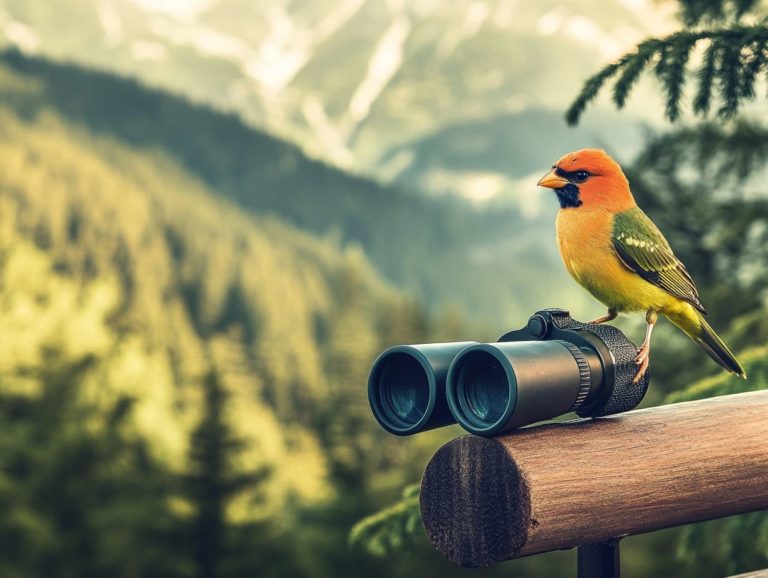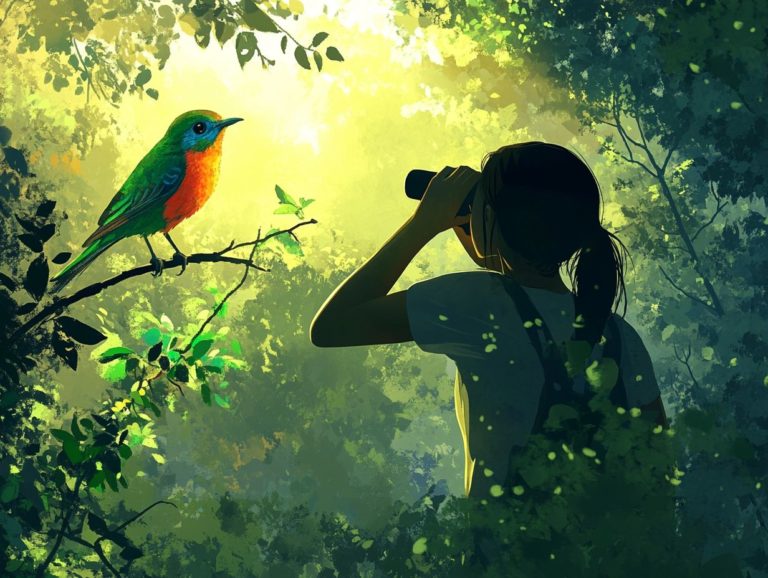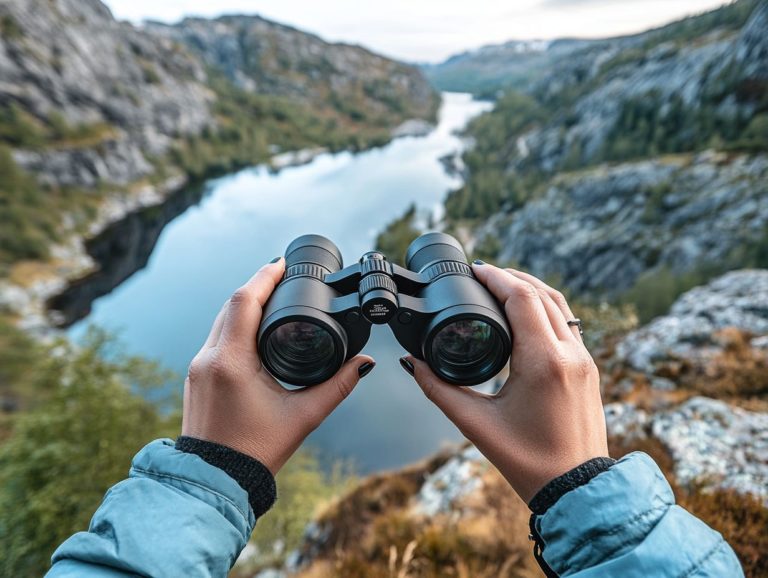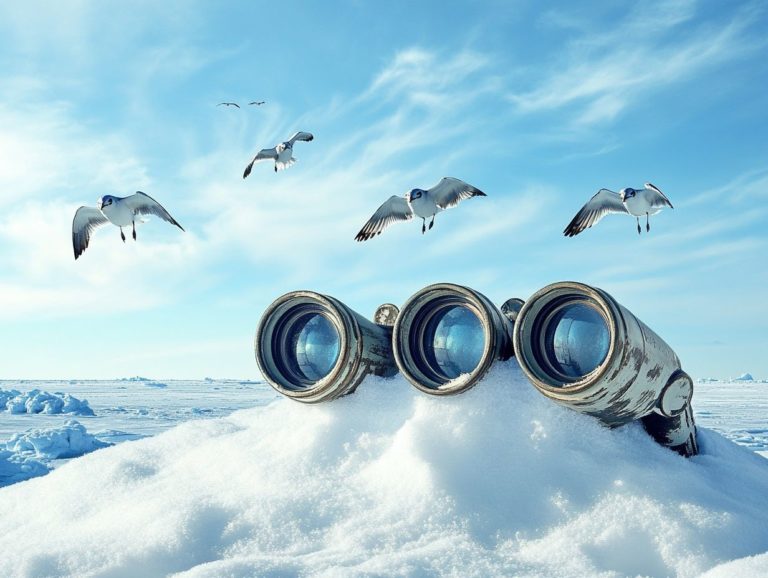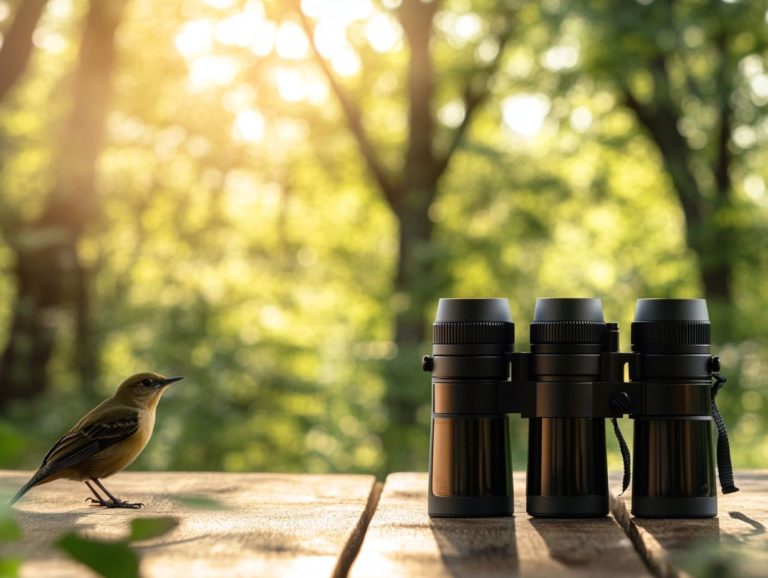How to Pick Binoculars for Birding Tours
Birding is the enchanting activity of observing and identifying birds in their natural environments. It has captivated nature enthusiasts all over the globe.
As this delightful hobby continues to gain traction, having the right equipment becomes paramount for an enriching experience. This guide will also offer tips for using binoculars effectively, highlight essential accessories, and unveil some of the finest locations for unforgettable bird-watching adventures.
Let s take your birding adventures to the next level!
Contents
- Key Takeaways:
- Choosing the Right Binoculars for Birding
- Tips for Using Binoculars on Birding Tours
- Must-Have Gear for Birding Adventures
- Best Locations for Birding Tours
- Frequently Asked Questions
- What are the important factors to consider when picking binoculars for birding tours?
- What is the ideal magnification power for birding binoculars?
- Why is the objective lens size important for birding binoculars?
- How does the field of view impact birding binoculars?
- Is weight an important factor when choosing binoculars for birding tours?
- Can I use any type of binoculars for birding tours?
Key Takeaways:
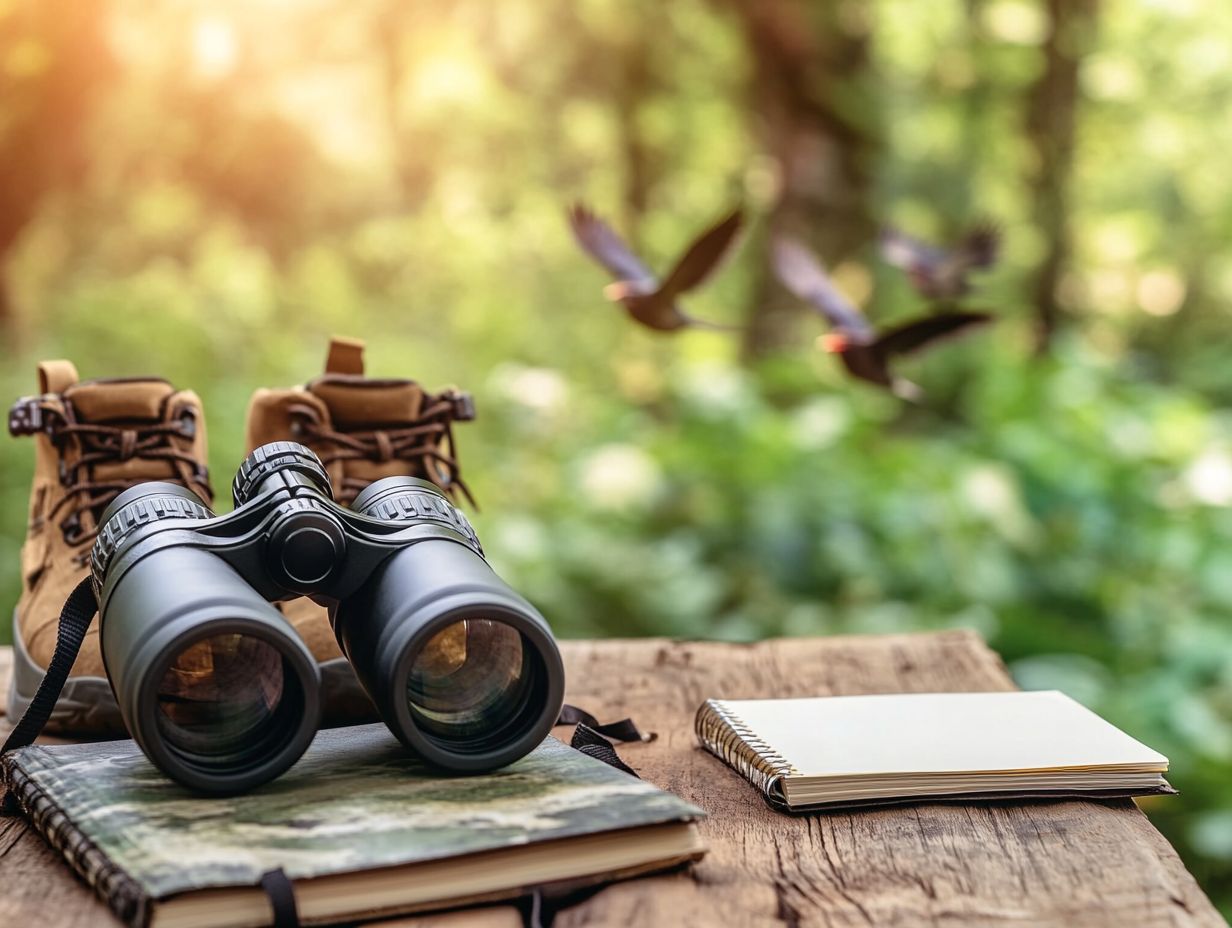
- Choose binoculars with a magnification between 7x and 10x for birding tours.
- Look for binoculars with a wide field of view and close focus ability to spot small birds.
- Invest in quality binoculars with a waterproof and fog-proof design for optimal performance on birding tours.
What is Birding and Why is it Popular?
Birding, or birdwatching as some might call it, has soared in popularity over the years. This delightful activity invites you to observe various bird species in their natural habitats, allowing you to appreciate the incredible diversity of avian life.
Organizations like the RSPB and events such as the Audubon Convention highlight the community’s passion for birding. Influential figures like David Sibley and Roger Tory Peterson have enriched the culture and education of birding, making it accessible and enjoyable for everyone.
The history of this charming pastime stretches back centuries, part of cultural traditions that celebrate wildlife observation. As you join local bird counts or participate in guided trail walks, you’ll not only deepen your connection to nature but also forge friendships that enhance your experience.
Educational resources, from detailed field guides to handy apps, have played a significant role in the surge of interest in birding, powering novices to learn alongside seasoned enthusiasts. Many find joy in identifying different species. The thrill of spotting a rare bird creates shared moments of awe that bind groups together, reinforcing the environmental values that birding champions.
Choosing the Right Binoculars for Birding
Choosing the right binoculars is essential for elevating your birding experience. For guidance on this, refer to how to select binoculars for bird watching tours; it allows you to observe birds in exquisite detail while ensuring comfort and clarity.
With a range of specifications available, you’ll find popular options like the 8×42 and 10×42 models. Each provides unique magnification levels and field of view tailored to various lighting conditions and birdwatching environments. To enhance your experience, it’s important to know how to use binoculars for bird watching safely.
Key factors such as eye relief (the distance from the eyepiece at which you can see the full field of view) and objective lens diameter play a significant role in enhancing both performance and comfort. Understanding these features is vital for making an informed choice.
Important Features to Consider
When selecting binoculars for birding, it’s essential to consider several key features: magnification, field of view, and eye relief. For more detailed guidance, check out these tips for choosing binoculars for bird photography. These elements significantly impact the clarity and performance of your optics, creating an immersive birdwatching experience.
Brightness, color rendition, and the binoculars’ weatherproof capabilities are also critical in ensuring durability and functionality in the diverse conditions you may encounter in the field.
Choosing the right magnification affects how close the birds appear. While higher magnification can offer a more detailed view, it may compromise stability and field of view, so finding the right balance is crucial. The field of view is particularly important, as it allows you to track those swift movements with ease.
Plus, generous eye relief is a game-changer for those who wear glasses, ensuring comfort during those long observation sessions. Robust weatherproofing shields against moisture and dust, giving you peace of mind during unpredictable weather.
This ultimately enhances your overall enjoyment and success on every birdwatching outing.
Types of Binoculars for Birding
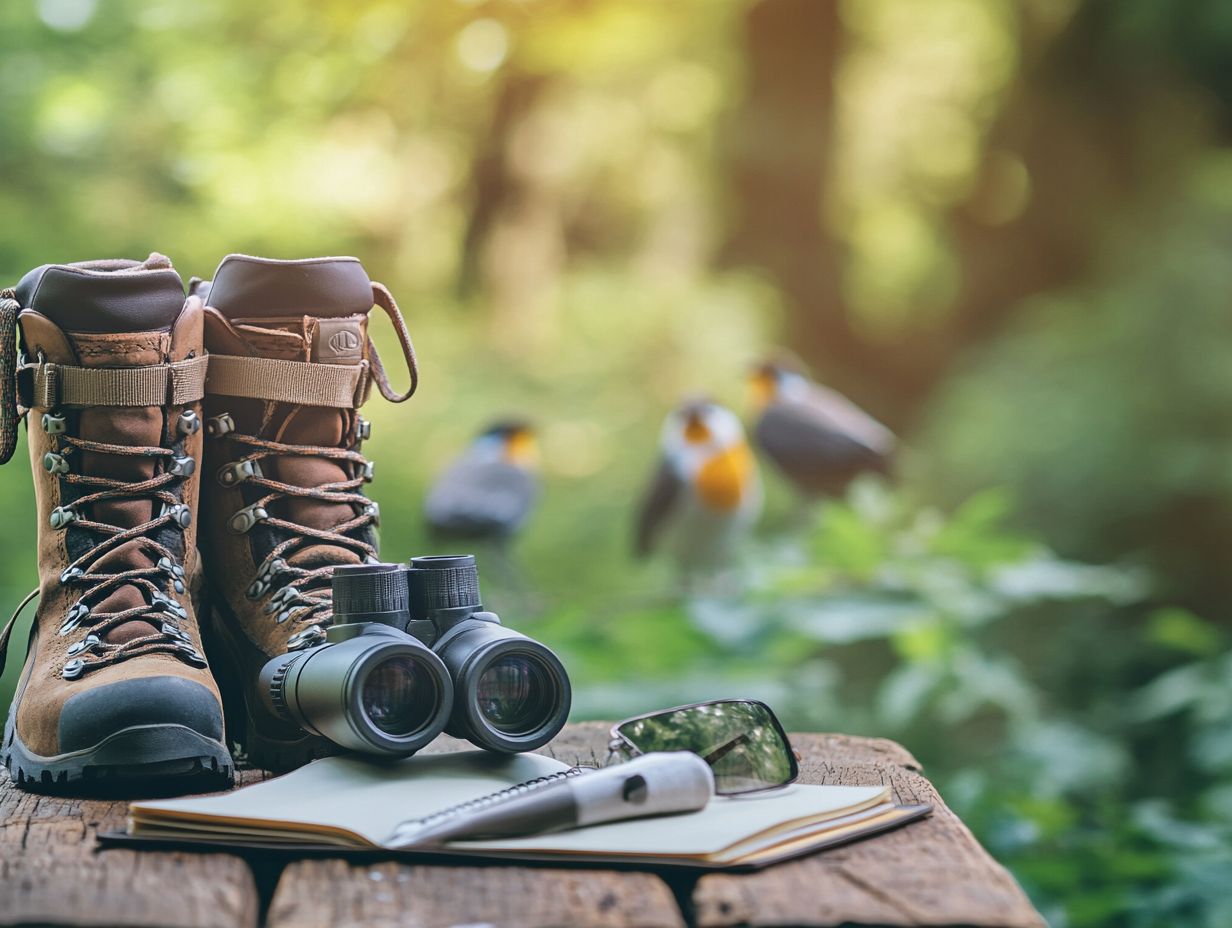
When it comes to birding, you’ll find many types of binoculars. Each one has unique features that enhance your birdwatching experience, including how to use binoculars for bird watching in groups.
The most common types are porro prism and roof prism binoculars. Porro designs give you a wider view and better depth.
If you want superior clarity, consider ED glass binoculars. For flexibility, zoom binoculars let you adjust magnification as needed.
Tips for Using Binoculars on Birding Tours
To elevate your birding experience, master the effective use of binoculars. This combines technique and regular maintenance for peak performance, so consider investing in the best binoculars for bird watching on a budget.
Learn to adjust your binoculars for close focus. Stability and clarity are essential as you observe captivating birds.
Regularly clean your lenses and check for weatherproofing to ensure seamless adventures.
Mastering Your Binoculars
Using the right technique is key for achieving optimal clarity. Hold your binoculars steady and adjust the focus accurately.
Regular maintenance extends their lifespan. Clean the lenses and ensure seals are intact for various conditions.
Consider adopting a stable holding method, such as bracing the binoculars against a tree or another stable surface to minimize shaking.
Utilizing the diopter adjustment allows you to fine-tune the view for any individual eye variations.
After each outing, a simple routine of lens cleaning with a microfiber cloth and a check for scratches maintains performance and fosters care.
Must-Have Gear for Birding Adventures
Along with binoculars, essential gear and accessories can greatly improve your birding experience. Consider items like field guides and comfortable clothing.
Each accessory should enhance your comfort and effectiveness while observing wildlife.
Recommended Accessories
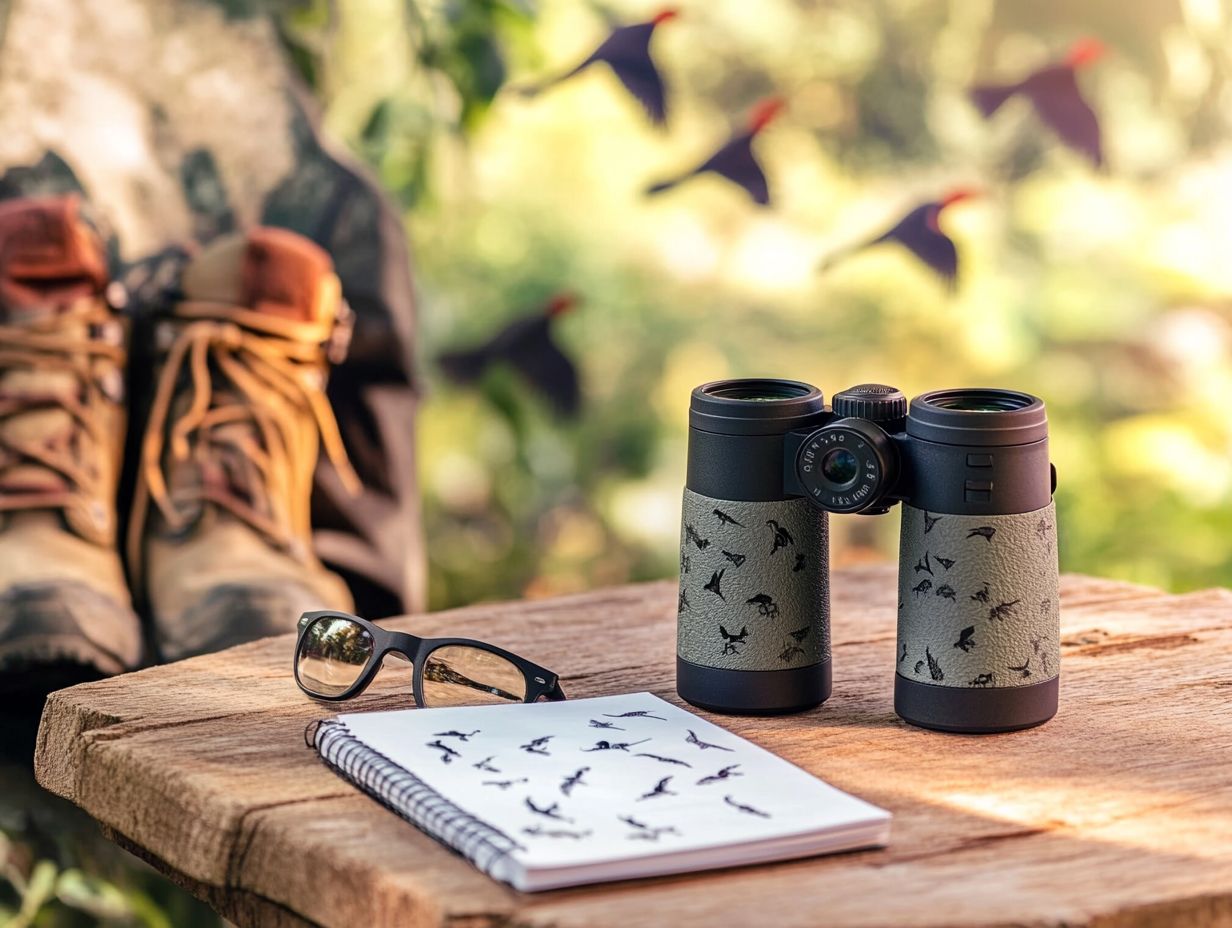
A thoughtfully curated selection of accessories can truly elevate your birding experience, ensuring both comfort and efficiency during your outings. Consider items like a comfortable backpack for transporting your gear. Field guides help you identify various species, and portable chairs or cushions make those extended viewing sessions more enjoyable.
These accessories will transform your birdwatching into an unforgettable adventure! Investing in weatherproof gear is wise, as it keeps your equipment safe from the elements while you explore.
Lightweight binoculars are essential for observing distant birds without intruding on their natural behaviors. For an optimal experience, consider using the best binoculars for backyard bird watching, as they allow you to appreciate their unique characteristics up close. A birding journal helps you document sightings and personal notes, making each excursion feel even more rewarding.
Don t forget about sun protection hats and sunscreen are crucial for keeping you comfortable during those long hours outdoors. Each of these carefully selected accessories plays a pivotal role in enriching your overall birding experience, helping you forge a deeper connection with the avian world.
Best Locations for Birding Tours
Identifying the best locations for your birding tours is crucial for spotting diverse bird species in their natural habitats. Whether it s wetlands or forests, each ecosystem presents unique opportunities for birdwatching, showcasing a remarkable variety of bird species.
Popular destinations for birding tours typically boast well-maintained trails, visitor centers, and knowledgeable guides. These features make them perfect for both budding birders and seasoned enthusiasts, especially when equipped with the best binoculars for bird watching trips, ensuring that every outing is memorable and rewarding.
Top Destinations for Bird Watching
Some top destinations offer unparalleled opportunities to observe a breathtaking array of species in stunning natural settings. Wetlands, national parks, and coastal areas serve as vital habitats for migratory birds. They guarantee an exhilarating experience for birders of all skill levels.
Take the Everglades in Florida, for example this prime spot is alive with unique species like the Roseate Spoonbill and the American Flamingo. Don t miss out on visiting during winter when many migratory birds flock to the area, providing you with a spectacular show!
The California coast is another gem, renowned for its impressive seabirds, including the Black Oystercatcher, particularly during the spring migration.
Events such as the International Bird Rescue Festival offer invaluable opportunities to learn and engage with experts in the field. Plus, local birding apps and online communities connect you to sightings and significant events, fostering a deeper appreciation for the enchanting world of birds.
Check out this video to enhance your birding knowledge!
Frequently Asked Questions
What are the important factors to consider when picking binoculars for birding tours?
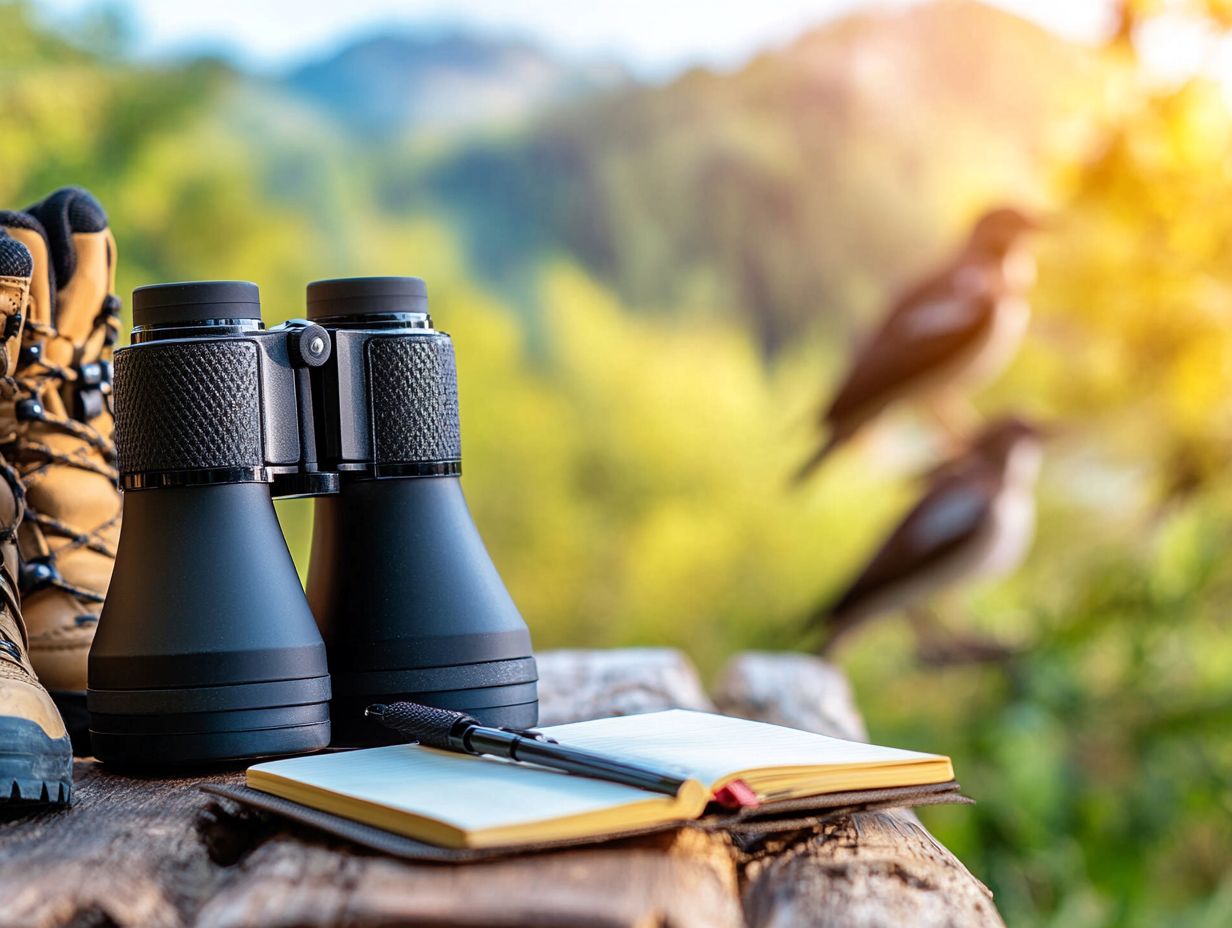
Wondering what factors to consider when picking binoculars? Here s what you need to know: There are multiple factors to consider, including magnification power, objective lens size, field of view, and weight.
What is the ideal magnification power for birding binoculars?
The ideal magnification power for birding binoculars is typically between 8x and 10x. Higher magnification can make it challenging to stabilize the image and may result in a narrower field of view. Additionally, choosing the perfect bird watching backpack can enhance your birding experience by providing easy access to your gear.
Why is the objective lens size important for birding binoculars?
The objective lens size determines how much light enters the binoculars. This affects the brightness and clarity of the image. For birding, a larger objective lens (usually 42mm or higher) is recommended for better low-light performance.
How does the field of view impact birding binoculars?
The field of view is the width of the area visible through the binoculars. A wider field helps you spot and track birds more easily.
Is weight an important factor when choosing binoculars for birding tours?
Yes, weight matters. Choose binoculars that weigh under 2 pounds for comfort during long birding trips.
Can I use any type of binoculars for birding tours?
You can use any binoculars, but choosing those designed specifically for birding is best. For more information, check out what to look for when buying birding binoculars. These binoculars feature waterproof and fog-proof coatings and have the ability to focus on birds that are close up.

